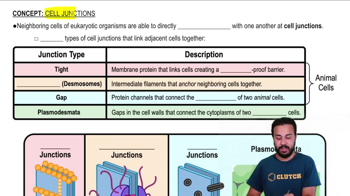Textbook Question
What effect would the hypothetical poison of question 3 have on other functions of the cell? Explain.
396
views
 Verified step by step guidance
Verified step by step guidance Verified video answer for a similar problem:
Verified video answer for a similar problem:



 6:05m
6:05mMaster Introduction to the Cytoskeleton with a bite sized video explanation from Bruce Bryan
Start learning